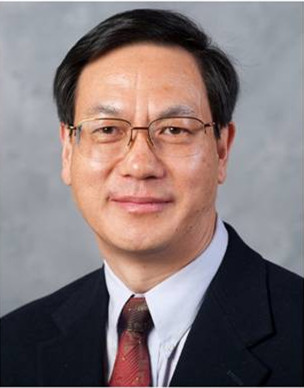【报告时间】2015年10月14日上午10:30-11:30
【报告地点】玉泉校区邵科馆117演讲厅
【报告题目】Nanogenerators for self-powered systems and piezotronics for smart devices
【报告摘要】
Developing wireless nanodevices and nanosystems is of critical importance for sensing, medical science, environmental/infrastructure monitoring, defense technology and even personal electronics. It is highly desirable for wireless devices to be self-powered without using battery. Nanogenerators (NGs) have been developed based on piezoelectric, trioboelectric and pyroelectric effects, aiming at building self-sufficient power sources for mico/nano-systems. The output of the nanogenerators now is high enough to drive a wireless sensor system and charge a battery for a cell phone, and they are becoming a vital technology for sustainable, independent and maintenance free operation of micro/nano-systems and mobile/portable electronics. An energy conversion efficiency of 55% and an output power density of 500 W/m2 have been demonstrated. This technology is now not only capable of driving portable electronics, but also has the potential for harvesting wind and ocean wave energy for large-scale power application. This talk will focus on the updated progress in NGs.
For Wurtzite and zinc blend structures that have non-central symmetry, such as ZnO, GaN and InN, a piezoelectric potential (piezopotential) is created in the crystal by applying a strain. Such piezopotential can serve as a “gate” voltage that can effectively tune/control the charge transport across an interface/junction; electronics fabricated based on such a mechanism is coined as piezotronics, with applications in force/pressure triggered/controlled electronic devices, sensors, logic units and memory. By using the piezotronic effect, we show that the optoelectronc devices fabricated using wurtzite materials can have superior performance as solar cell, photon detector and light emitting diode. Piezotronics is likely to serve as a “mechanosensation” for directly interfacing biomechanical action with silicon based technology and active flexible electronics. This lecture will focus on the updated progress in the field and its expansion to 2D materials.
【报告人简介】
 王中林院士是佐治亚理工学院终身校董讲席教授, Hightower终身讲席教授。
王中林院士是佐治亚理工学院终身校董讲席教授, Hightower终身讲席教授。
王教授是中国科学院外籍院士和欧洲科学院院士,荣获了2014年材料领域世界技术奖,汤森路透2015年度引文桂冠奖等多项国际学术奖励。他发明的纳米发电机,创立的压电电子学和压电光电子学具有重大的原创影响力,王中林被汤森路透预言为未来诺贝尔物理奖的热门人选。
王教授已在国际一流刊物上发表了1050篇期刊论文(其中12篇《科学》,4篇《自然》,10篇《自然》子刊)。被邀请850多次学术讲演和大会特邀报告。学术论文被引用86,000次以上,H因子(h-index)141。
王中林是国际公认的纳米科技领域领军人物,在一维氧化物纳米结构制备、表征及其在能源技术、电子技术、光电子技术以及生物技术等应用方面均作出了原创性重大贡献。他发明了纳米发电机,并提出了自充电纳米结构系统,为微纳电子系统的发展开辟了新途径。他开创了纳米结构压电电子学和压电光电子学研究的先河,对纳米机器人、人-电界面、纳米传感器、医学诊断及光伏技术的发展具有里程碑意义。

